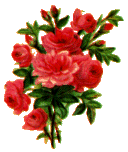|
|
 |
| It is probably safe to assume that most men really don't know very much about jewellery, so buying a diamond engagement ring is a big step. You'll be spending a considerable amount of money, how are you to be sure that you are getting good value? We have attempted to explain the terminology associated with jewellery, diamonds in particular, if you read this you will be armed with a very basic knowledge of diamond buying, which should enable you and your fiancé to make the right choice |
||||||||||||||||||
| Where to start? If
you haven't used a jeweller How much to spend. It is generally accepted that the groom should spend the equivalent of one months salary on the engagement ring, however the amount that you spend is entirely a matter of personal choice. The average amount spent on the engagement ring seems to average out at about 7.5% of the overall wedding budget. If you have Microsoft Excell in your computer you can download our budget planner, we hope it will assist you with your wedding budget. |
||||||||||||||||||
| The Four C's The
four C's are "Cut, Colour, Clarity and Caret." |
||||||||||||||||||
| The Cut. A gifted
diamond cutter The
object is to produce a stone which is symmetrical. Diamonds are graded with a scale of 0 to 10 with the 0 being the rare ideal cut with the 10 at the other end of the scale. |
||||||||||||||||||
| Colour. The colour of a diamond actually refers to the amount by which the stone is colourless. Some jewellers have a set of master stones in their shops, they use these
Table of Colour Definition.
|
||||||||||||||||||
| Clarity. Clarity refers to the amount of inclusions within the diamond, the higher he percentage of inclusions the less will be the value of the stone, and the less light it will reflect. It is almost impossible to see these with the naked eye, if you use a magnifying glass they would appear as misty areas One often hears the term flawed, diamonds can more acurately described as having inclusions, all stones have inclusions even those of the highest quality, in the table below we are listed the scales as defined in America.
|
||||||||||||||||||
| Carat There is sometimes confusion as to what carat refers to, it is actually a measurement of weight (One carat is 200 milligrams) one carat is divided into 100 points. You would tend to think that the larger and heavier the stone was the more valuable it would be. This of course is not the case, colour and clarity are also very important factors in determining the value of a stone. Jewellers have or should have scales that can weigh diamonds to an accuracy of .002 of a carat, which is an incredibly sensitive set of scales. |
||||||||||||||||||
| The Setting. If
you have ever looked |
||||||||||||||||||
| The Shape. There are many shapes on the market today. Designers are constantly experimenting with new shapes, but the classic cuts are round brilliant, emerald, oval, pear, marquis and square. The shape you choose does not affect the quality or cost of the stone. The shape of the cut stone is probably determined more by a desire to get as large as possible a cut stone from the original un cut stone. |
||||||||||||||||||
| What Different Precious Stones Represent.
|
||||||||||||||||||
| Insure Your Ring. When you purchase your ring don't forget to insure it, you can usually add it to your household policy. |
|
|
 before ask around
your friends who have recently been married or engaged, they will be
able to recommend a reputable jeweller to you. If that fails check our
jewellers page there are many jewellers listed there from all over Ireland.
Many of these have web sites.
before ask around
your friends who have recently been married or engaged, they will be
able to recommend a reputable jeweller to you. If that fails check our
jewellers page there are many jewellers listed there from all over Ireland.
Many of these have web sites. can bring out
the brilliance of a stone by cutting the stone so that it reflects the
maximum amount of light both within the stone and through its face.
can bring out
the brilliance of a stone by cutting the stone so that it reflects the
maximum amount of light both within the stone and through its face. closely at a diamond
ring you will see that the stone is held in place by little metal brackets
(prongs) if the setting is inferior and the prongs badly formed this
can allow the diamond to move around and probably eventually fall out.
It is important that all of the prongs are securely formed over the
crown of the stone.
closely at a diamond
ring you will see that the stone is held in place by little metal brackets
(prongs) if the setting is inferior and the prongs badly formed this
can allow the diamond to move around and probably eventually fall out.
It is important that all of the prongs are securely formed over the
crown of the stone.